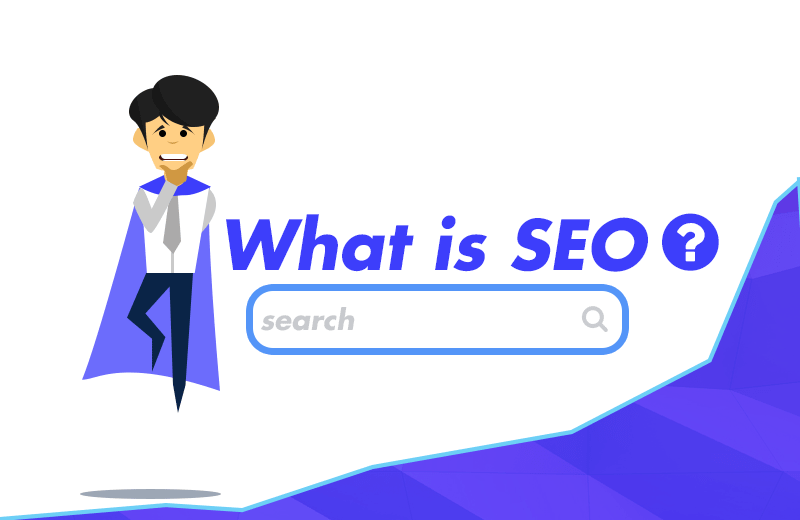I hope you enjoy reading this blog post.
If you want to get more traffic, Contact Us

Click Here - Free 30-Minute Strategy Session
Be quick! FREE spots are almost gone for this Month. Free Quote

Search engine optimization (SEO) is a business marketing channel with plenty of benefits. It can be implemented by both small and large businesses due to its low cost and scalability.

Click Here – Free 30-Minute Strategy Session
Be quick! FREE spots are almost gone for this Month

Search Engine Optimisation (SEO) refers to the practice of enhancing a website’s visibility in search engine results pages (SERPs). It involves optimising various elements of a website to align with search engine algorithms and user search intent. SEO focuses on increasing organic (non-paid) traffic by improving the website’s rankings for targeted keywords.
Key components of SEO include:
Keyword Research: Identifying phrases users search for.
On-Page Optimisation: Refining website content and HTML elements.
Off-Page Strategies: Building backlinks and improving domain authority.
Technical SEO: Ensuring optimal site performance and structure.
SEO is vital for businesses seeking online growth, as higher search rankings drive credibility and engagement.
Search Engine Optimisation (SEO) is essential for websites because it increases online visibility, driving organic traffic. A well-optimised site ranks higher in search engine results, making it easier for users to find relevant content. SEO helps businesses target specific audiences by focusing on keywords and user intent. Enhanced visibility leads to increased trust from users, as higher-ranked sites are often perceived as more credible. Improved SEO also ensures better user experience through faster page speeds, mobile responsiveness, and optimised content. Ultimately, SEO plays a key role in ensuring long-term growth, improving both brand awareness and conversion rates.
Search engines function by indexing vast amounts of online content to provide relevant results to user queries. This process involves three critical stages:
Crawling: Automated bots, called crawlers or spiders, scan the web to discover new and updated content. They follow links and compile data from webpages.
Indexing: The information collected is organised and stored in an index. This index acts as a massive database that enables efficient retrieval of data when users search.
Ranking: Search algorithms analyse factors such as keyword relevance, content quality, and website authority to determine the order of results displayed.
These stages work simultaneously, ensuring search engines deliver accurate and timely results.
Search Engine Optimisation (SEO) is built upon three core pillars that ensure success in reaching and engaging target audiences effectively.
On-page SEO focuses on optimising elements within a webpage. It includes:
Keyword optimisation to ensure content aligns with search intent.
Meta tags, titles, and headings that are concise and descriptive.
Quality content that adds value to users.
Internal linking to enhance navigation and content hierarchy.
This involves strategies external to a site that influence rankings. Key approaches include:
Link building to signal authority and trustworthiness.
Social signals like shares that amplify content visibility.
Brand mentions to build domain reputation.
Technical SEO ensures search engines can crawl and index sites properly by focusing on:
Site speed for quick responsiveness.
Mobile optimisation for better accessibility.
Structured data to provide detailed content information.
Keyword research drives SEO strategies, identifying terms users search for online. It helps determine target keywords based on relevance, search volume, and competition levels. Tools like Google Keyword Planner and SEMrush provide insights into popular queries.
Businesses can create lists of keywords sorted by intent, such as informational or transactional. Long-tail keywords, which are more specific, attract niche audiences and often have less competition.
Analysing competitors’ keywords reveals gaps in content strategy and opportunities for growth. Regularly updating keyword research ensures alignment with evolving search trends, enhancing visibility and boosting organic traffic.
Effective optimisation begins with understanding keyword research, as these terms reflect the language of users and dictate search intent. Integrated in headers, meta descriptions, and throughout the content, keywords improve discoverability. Quality content must remain relevant, informative, and tailored to user queries while ensuring readability.
Creating engaging titles to attract clicks and inform search engines.
Incorporating internal and external links to strengthen authority and navigation.
Using image alt tags to boost accessibility and SEO.
Search engines prioritise pages that meet user expectations. Techniques like updating content regularly and structuring text with clear headers improve both ranking and user experience.
Backlinks serve as a crucial factor in establishing a website’s authority and trustworthiness within search engines. They represent external links pointing to a website, signalling its relevance and value to users. High-quality backlinks from reputable sources demonstrate to search engines that the website is credible.
Off-page SEO strategies include tactics such as guest posting, acquiring editorial links, and leveraging social media platforms. Building backlinks involves identifying authoritative websites, creating valuable content, and fostering relationships with influencers or industry leaders. Search engines factor the number and quality of backlinks into rankings, making them indispensable for improving visibility organically.
Technical SEO involves optimising a website’s infrastructure to enhance both search engine crawlability and user experience. Factors such as site speed, mobile-friendliness, and secure browsing (HTTPS) significantly impact rankings.
Key areas include:
Site Architecture: Ensuring a logical structure with clear navigation and internal linking.
Crawlability: Utilising robots.txt, XML sitemaps, and proper URL structures for search engine indexing.
Page Speed: Minimising load times through image compression, caching, and efficient coding.
Mobile Optimisation: Implementing responsive design for seamless accessibility across devices.
Structured Data: Adding schema markup for rich search results.
A well-executed technical SEO strategy supports overall SEO efforts and ensures an optimised digital presence.
Tracking SEO performance involves using specialised tools and analysing key metrics to determine effectiveness. Tools like Google Analytics and Google Search Console are essential for monitoring traffic, keyword rankings, and user behaviour. Popular third-party platforms such as SEMrush or Ahrefs provide insights into backlink profiles and competitive analysis. Key metrics to consider include organic traffic, click-through rate (CTR), bounce rate, and domain authority. Regular audits help identify technical issues, like broken links or slow page speed. Businesses can set goals, monitor conversions, and adjust strategies accordingly. Consistent evaluation ensures efforts align with objectives while improving overall search visibility.
Proper SEO requires attention to detail and strategic thinking, yet many pitfalls can hinder a website’s ranking efforts.
Keyword Stuffing: Overusing keywords disrupts readability and can lead to penalties from search engines.
Duplicate Content: Repeating content across pages undermines originality and confuses search algorithms.
Neglecting Mobile Optimisation: Ignoring mobile users in a mobile-first world harms usability and rankings.
Ignoring Meta Tags: Failing to optimise meta descriptions and titles can reduce click-through rates and visibility.
Poor Internal Linking: Inconsistent or irrelevant links hinder navigation and weaken domain authority.
By monitoring these errors, one can build a robust SEO strategy that aligns with search engine best practices.
Search engines continually refine their algorithms, placing greater emphasis on user experience and content relevance. Staying updated requires tracking core updates and adhering to evolving best practices. The integration of artificial intelligence has reshaped SEO by introducing smarter ranking systems, such as Google’s RankBrain and MUM. AI aids in understanding search intent, enhancing personalised search results, and refining natural language queries.
SEO professionals need to focus on:
Leveraging AI-powered tools to perform advanced keyword research and content optimisation.
Creating high-quality, user-focused content instead of keyword-stuffed pages.
Embracing voice search optimisation and ensuring mobile-first indexing compliance.
Adapting proactively ensures sustained competitive advantage.


LEAVE A REPLY